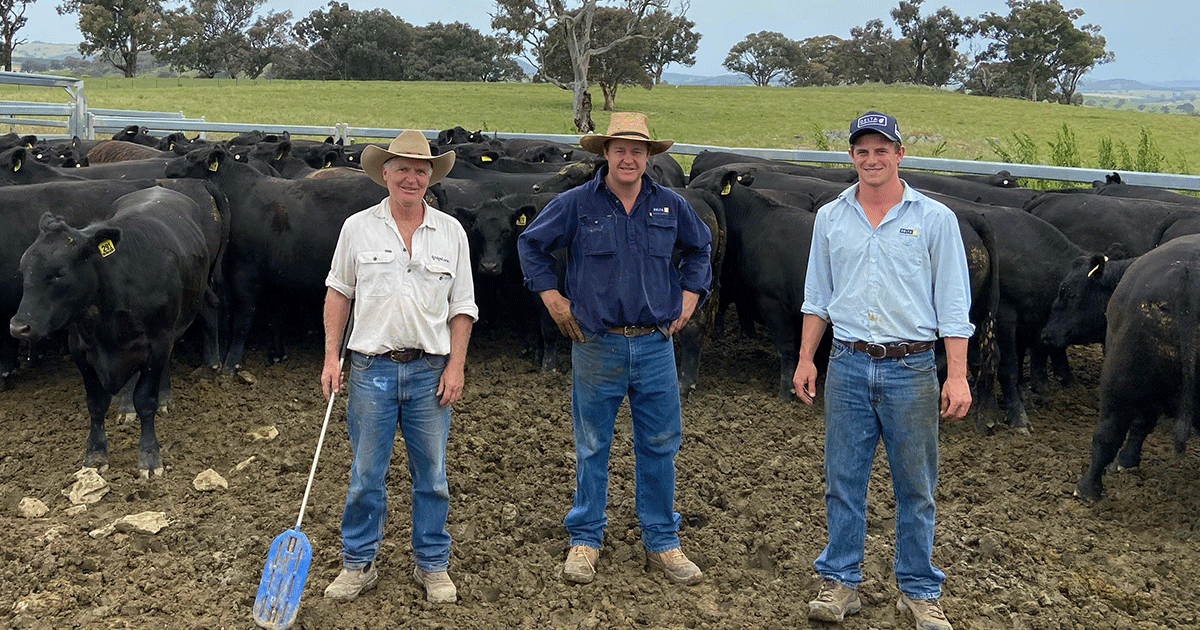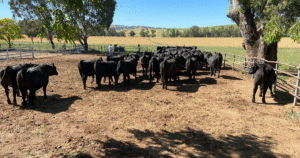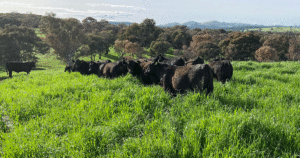Angus thrive on the hills at Bundarbo Station


Breeding Angus cattle that can handle terrain, from the river bank up into the hills, was an easy choice for Bernie Byrnes.
Mr Byrnes, general manager of BridgeLane, says while Angus were already a fixture on Bundarbo Station, continuing the breed made the most sense.
BridgeLane Group bought Bundarbo Station, 2400 hectares on the Murrumbidgee River near Jugiong NSW, in 2019. Mr Byrnes said they were lucky to purchase a good line of younger Angus cows from the previous owner.
“There is always a constant demand for Angus feeders,” he said.
“And the Angus are pretty suited to the environment. It is quite hilly, and they can handle the terrain and handle the seasons. It gets pretty cold here in winter and hot during the day in summer, so having a breed that can comfortably handle both is crucial.”
“When we took over, it was a very ordinary spring and the summer was terrible. Despite the season, the pregnancy testing rate across the herd was very good and the cows really held their condition.
“This set us up well when the autumn break came, and we have had a dream run of seasons since.
 “We have purchased outside heifers to boost our numbers to where they need to be. .”
“We have purchased outside heifers to boost our numbers to where they need to be. .”
Set up for life at Bundarbo
Today Bundarbo Station at Jugiong runs about 1200 Angus breeders.
“We try not to complicate our bull selection too much, but we focus on the 400-day growth and high calving ease direct for bulls to be joined to heifers,” general manager Bernie Byrnes said.
“We are pretty light on for labour and the ease of management we are looking for in our heifers is important, especially given our low culling rate due to the herd rebuild.
“When we took out a forward contract for a portion of our steers with a southern Queensland feedlot in 2021, they requested the TACE figures from the bulls we have purchased.”
Calving begins in July, and calves are weaned in January when they weigh 280 kilograms. The weaning program is very important at Bundarbo, with a focus on setting the weaners up for life.
“They can be tough times depending on the season, but we yard wean for two to three weeks and try to get the weaners onto grazing crops along the river by the end of March,” he said.
“Our assistant manager Ken McGuirk leads the day-to-day stock movements and spends a great deal of time educating the calves over weaning, working dogs with them and taking them through the yards a few times. Investing this little bit extra at weaning makes it so much more pleasant as you handle them later in their lives.”
Bundarbo Station has about 50ha of scheduled grazing crops annually, and Mr Byrnes said this had worked well with the pasture improvement strategy.”We have averaged close to one kilogram gain a day since weaning, which we’re pretty happy with, given the cold, wet winter,” he said.
“As spring started they really hit their straps and were gaining 1.5 to 2kg/day.”
 Mr Byrnes said growth rates were a real focus in the Bundarbo enterprise.
Mr Byrnes said growth rates were a real focus in the Bundarbo enterprise.
“While we are primarily a breeding operation, we aim to grow pasture and crop and give the steers the best opportunity to hit 500kg at 12 to 15 months, season permitting,” he said. “Then we need to offload them and make room for the next crop of calves. If we compromise the spring feed base by carrying too many steers, it can really set us back with getting cows back in calf.”
Bundarbo utilises Cam Rosser from Delta Livestock to market its cattle, which mostly head to feedlots.
“We rely on Cam to present us with timely marketing options for our cattle, as well as bringing us trade opportunities when we have surplus feed, such as this year.”
Julia Wythes The Land
Feature Image: THRIVING ON THE HILLS: Bundarbo assistant manager Ken McGuirk with Cam Rosser and Jack Mann, Delta Livestock, with a draft of 560kg Angus steers at Bundarbo Station, Jugiong.